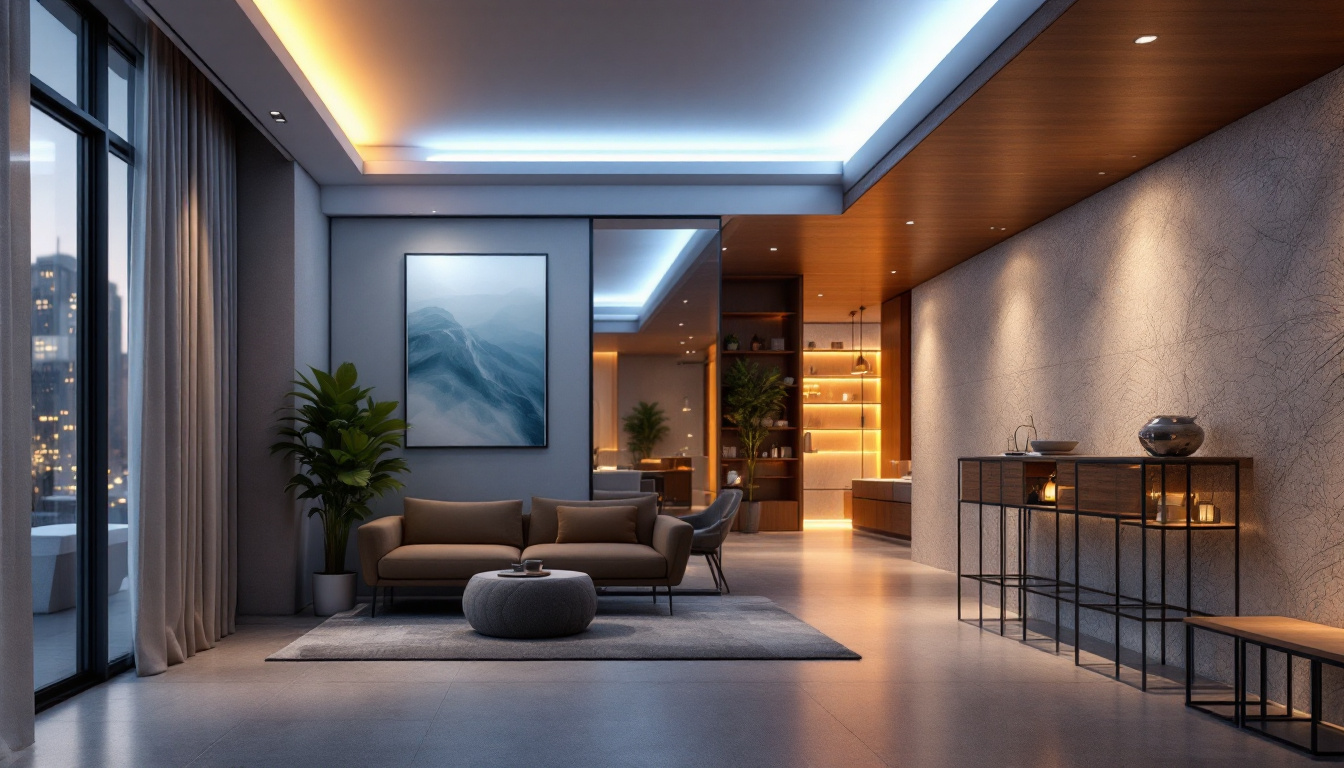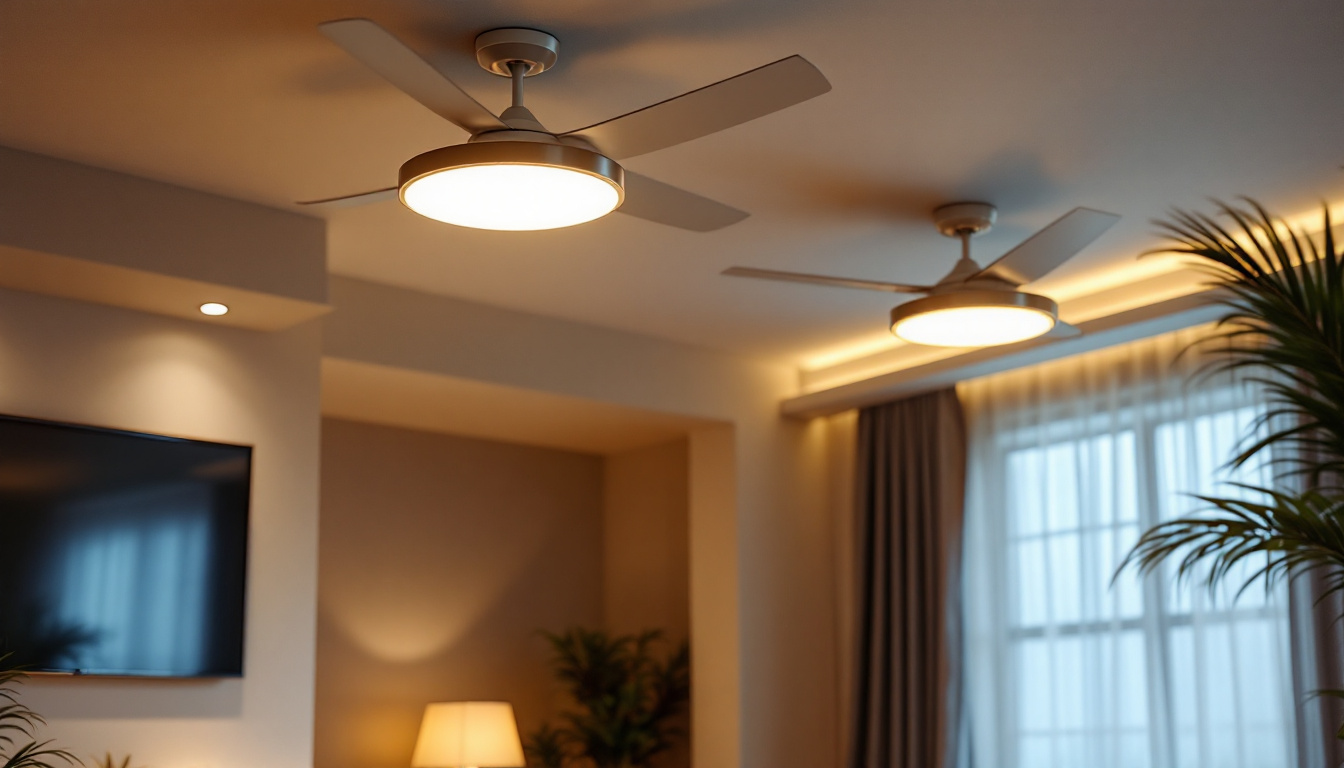
In the ever-evolving landscape of lighting design, LED light tracks have emerged as a versatile and efficient solution for both residential and commercial applications. As energy efficiency becomes increasingly important, lighting contractors must stay abreast of the latest trends in LED technology and design. This article explores the current trends in LED light tracks that every lighting contractor should be aware of to provide clients with the best solutions.
LED light tracks consist of a linear system that allows for the flexible placement of LED fixtures along a mounted track. This design not only enhances the aesthetic appeal of spaces but also provides a high degree of functionality. As lighting contractors, understanding the mechanics and benefits of LED light tracks is crucial for effective installation and customer satisfaction.
One of the primary advantages of LED light tracks is their energy efficiency. Compared to traditional lighting solutions, LED lights consume significantly less power, which translates to lower energy bills for clients. Additionally, LED lights have a longer lifespan, reducing the frequency of replacements and maintenance costs.
Another benefit is the versatility that LED tracks offer. They can be easily adjusted or reconfigured to suit changing needs, making them ideal for spaces that require adaptable lighting solutions, such as galleries, retail stores, and residential areas. This adaptability is particularly beneficial in environments where the layout may change frequently, allowing for a seamless transition in lighting design without the need for extensive renovations.
LED light tracks are suitable for a wide range of applications. In retail environments, they can be used to highlight merchandise and create an inviting atmosphere. In residential settings, they offer a modern touch to kitchens, living rooms, and home offices. Furthermore, they are increasingly being utilized in commercial spaces such as offices and conference rooms, where adjustable lighting can enhance productivity and comfort.
Moreover, LED light tracks are also gaining popularity in artistic and creative spaces, such as studios and theaters, where precise lighting control is essential. They allow artists and performers to manipulate the intensity and direction of light, creating dynamic visual experiences that can transform a simple space into an immersive environment. This capability not only supports the artistic vision but also enhances the overall experience for audiences, making LED tracks a valuable asset in any creative endeavor.
As the demand for LED lighting continues to grow, so too do the design trends that shape how these systems are implemented. Staying updated on these trends is essential for lighting contractors aiming to provide cutting-edge solutions to their clients.
Minimalism has become a dominant trend in interior design, and LED light tracks are no exception. Sleek, unobtrusive designs that blend seamlessly with the architecture of a space are highly sought after. Contractors should consider options that feature slim profiles and clean lines, allowing the lighting to enhance the environment without overwhelming it.
Moreover, the use of integrated lighting systems, where the track itself is part of the architectural design, is gaining popularity. This approach not only maximizes space but also adds a contemporary flair to any room. The integration of LED tracks into ceiling designs or wall panels can create a cohesive look that elevates the overall aesthetic. By utilizing materials such as aluminum or composite finishes, designers can achieve a modern yet warm feel that complements various interior styles.
The rise of smart home technology has led to the integration of LED light tracks with smart lighting systems. This allows users to control their lighting remotely through smartphones or voice-activated devices. Lighting contractors should be familiar with various smart technologies and how they can be incorporated into LED track systems to provide clients with enhanced control over their lighting environments.
Features such as dimming capabilities, color temperature adjustments, and programmable settings are becoming standard expectations among consumers. Offering these options can set a contractor apart in a competitive market. Additionally, the ability to create lighting scenes tailored to specific activities—like reading, entertaining, or relaxing—can greatly enhance the functionality of a space. As smart lighting technology evolves, incorporating features like motion sensors and energy monitoring will also appeal to eco-conscious clients looking to reduce their carbon footprint.
Another trend that is gaining traction is the emphasis on color quality and temperature in LED lighting. The ability to adjust the color temperature of LED fixtures can significantly impact the ambiance of a space. Warm white tones are often preferred for residential settings, while cooler temperatures may be more suitable for work environments.
Additionally, the use of color-changing LEDs allows for dynamic lighting that can adapt to different moods or occasions. Contractors should be prepared to discuss these options with clients, emphasizing how they can enhance the overall experience of a space. The psychological effects of color in lighting are profound; for instance, studies have shown that blue light can increase alertness and productivity, making it ideal for office settings. Conversely, softer hues can create a calming atmosphere in bedrooms or relaxation areas. By understanding these nuances, contractors can provide tailored solutions that not only meet aesthetic desires but also promote well-being and functionality in everyday life.
While understanding the latest trends is essential, knowing how to install LED light tracks correctly is equally important. Proper installation ensures safety, efficiency, and longevity of the lighting systems.
Before installation, careful planning of the layout is crucial. Contractors should assess the space and determine the best locations for the tracks to maximize light distribution. Factors such as ceiling height, existing architectural features, and the intended use of the space should all be taken into account.
Additionally, it is beneficial to create a lighting plan that includes the type of fixtures to be used, their spacing, and the overall aesthetic goals of the project. This plan can serve as a guide during installation and help ensure that the final result meets client expectations. Incorporating software tools for lighting design can also enhance the planning process, allowing for simulations of light distribution and intensity before any physical work begins. This can help identify potential issues early on, such as shadows or overly bright spots, leading to a more refined and effective lighting solution.
Proper wiring is essential for the safe and effective operation of LED light tracks. Contractors should ensure that the electrical supply is adequate for the number and type of fixtures being installed. It is also important to follow local building codes and regulations regarding electrical installations.
Using high-quality connectors and ensuring secure connections can prevent issues such as flickering lights or power failures. Additionally, providing clients with information about the maintenance and care of their lighting system can help prolong its lifespan and performance. It’s also wise to consider the use of dimmers and smart controls, which can enhance the versatility of the lighting system. These features not only allow users to adjust brightness levels according to their needs but can also contribute to energy savings and create different atmospheres in the space, making the lighting system more adaptable to various activities and moods.
The future of LED light tracks is bright, with ongoing innovations expected to further enhance their functionality and appeal. Lighting contractors should remain informed about these developments to provide clients with the most advanced solutions available.
As technology continues to evolve, advancements in energy efficiency are likely to emerge. Future LED systems may utilize even less energy while providing higher light output. This could lead to significant savings for clients and contribute to broader sustainability goals.
Innovations such as improved heat management systems and more efficient driver technology are also on the horizon, which could enhance the performance and longevity of LED light tracks.
Customization is becoming increasingly important in the lighting industry. Future LED light tracks may offer even more options for personalization, allowing contractors to tailor lighting solutions to meet specific client needs. This could include adjustable lengths, customizable colors, and unique fixture designs that align with a client’s vision.
Such advancements would not only enhance the aesthetic appeal of spaces but also allow for greater flexibility in design, making it easier for contractors to meet diverse client requirements.
As the push for sustainability continues, the integration of LED light tracks with renewable energy sources, such as solar panels, could become more prevalent. This would enable clients to power their lighting systems with clean energy, further reducing their carbon footprint and energy costs.
Lighting contractors should consider how to incorporate renewable energy solutions into their offerings, as this could provide a competitive edge in a market increasingly focused on sustainability.
LED light tracks represent a dynamic and evolving segment of the lighting industry. For lighting contractors, staying informed about current trends, installation best practices, and future innovations is essential for success. By understanding the benefits and applications of LED light tracks, as well as the latest design trends and technological advancements, contractors can provide clients with effective, energy-efficient, and aesthetically pleasing lighting solutions.
As the demand for versatile and sustainable lighting solutions continues to grow, embracing these trends will not only enhance the contractor’s offerings but also contribute to a more energy-efficient future. By prioritizing education and adaptability, lighting contractors can ensure they remain at the forefront of the industry, ready to meet the needs of their clients.
Ready to elevate your lighting game with the latest LED light track trends? At LumenWholesale, we provide lighting contractors with exceptional, spec-grade lighting products at prices that can’t be beaten. Say goodbye to local distributor markups and hello to our extensive selection of high-quality lighting solutions. With free shipping on bulk orders, you can stock up on premium lighting without any hidden costs. Don’t compromise on quality or value—choose LumenWholesale for the perfect fusion of affordability and convenience. Wholesale Lighting at the Best Value is just a click away. Start transforming your lighting projects today!

Discover how halogen lights at Lowes can boost your profits with expert tips for lighting contractors.

Discover how solar outdoor wall lights are revolutionizing the lighting industry, offering eco-friendly solutions that enhance efficiency and creativity for contractors.

Discover innovative cost-saving strategies for lighting contractors using ultraviolet lamps.

Discover innovative strategies from smart lighting contractors as they transform fan lights into energy-efficient, intelligent fixtures.